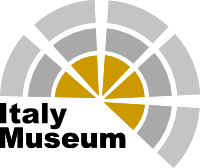National Museum of Capodimonte
A little history of the National Museum of Capodimonte
In 1738 Charles of Bourbon decided to build a large building to preserve the collection of paintings inherited from his mother, Elisabeth Farnese. Although it was born with an artistic purpose, over the years the Royal Palace of Capodimonte was also used as a royal residence, first by the Bourbons, then by the French, then again by the Bourbons and finally by the Savoia. However, it has never completely surrendered to its original destination, except perhaps during the Napoleonic domination, where it was the victim of so-called "plundering".
At the end of the 18th century, when the French took control of part of the Italian peninsula, there were numerous appropriations of works of art, which went to embellish museums and palaces beyond the Alps. As it happened in other cases, with Leonardo da Vinci's Mona Lisa, more than three hundred stolen paintings never returned to Italy. Only the cunning of Ferdinand of Bourbon allowed to save some of them, which were moved to Palermo the year before the arrival of the French in Naples.
Unfortunately, even during World War II, the paintings were stolen by the German militia, but this time they were recovered. Since World War II, the Royal Palace has finally been reorganized and dedicated exclusively to what was born: to house the paintings of one of the oldest and most prestigious collections in the world.
What is the National Museum of Capodimonte today?
Today the Royal Palace is one of the most important art galleries at the regional and national level. In the Farnese Gallery, you can admire masterpieces by Botticelli, Masaccio, Titian, Vasari, Parmigianino, Caravaggio and many others. In the Borgia collection, you will find ancient artefacts of Egyptian, Etruscan, Greek-Roman and Far Eastern origin. Also, the exhibitions dedicated to Neapolitan artists and the contemporary art collection, which houses the famous Vesuvius by Andy Warhol, will win your attention.
Finally, you can visit the royal apartments, where the Bourbons, the French and the family of the Dukes of Aosta have resided; also in this part of the building, there are tributes to art, with a rich display of porcelain and paintings. Apart from the palace, today you can also visit the beautiful Real Bosco di Capodimonte, more than one hundred hectares of a park that extends all around the Royal Palace.
Curiosity about the National Museum of Capodimonte?
The Royal Palace of Capodimonte was born from the love for the art of Charles of Bourbon, who wanted to build a building to house the Farnese collection inherited from his mother, Elisabeth. This initial purpose can also be seen in the architecture of the Palace itself. The Palace was built in the neoclassical style typical of the royal residences of 18th century Europe.
The Piperno grey and Neapolitan red accentuate, even more, the prestige of the Bourbon dynasty, it is also true that the building presents details of the Doric appeal, thus revealing the true nature of the Palace. The Doric style was the most used to build theatres and museums, that is, places of culture. Therefore, already in its structure, the Palace reveals its true nature.
But do you know what the Farnese Collection is? Born between the cities of Rome, Parma and Piacenza, this collection brings together up to 329 paintings, the result of the work and passion of Alessandro Farnese, who in the 16th century began collecting some of the most important pieces of the time. This collection is so prestigious that the Royal Palace of Capodimonte was built to have a place of its own. The internal structure of the building is designed precisely according to this: the rooms destined to house the paintings to be exhibited were built on the upper part facing the sea, while the space towards the interior courtyards was dedicated to the library and other artefacts.
Why visit the National Museum of Capodimonte?
This renowned Neapolitan museum houses the paintings of some of the most important painters of the art scene of the last five hundred years. An example of all this is the beautiful room of the Umbrian-Tuscan painters, which gathers works by Sandro Botticelli, Raffaello, Filippino Lippi and many others.
But that's not all: visiting the Royal Palace means not only immersing yourself in art but also architecture and greenery. The whole building is one of the most successful products of the Neoclassical style, so in vogue in the 18th century. Furthermore, in the Royal Bosco di Capodimonte, you can see exotic plants and more than four hundred types of trees, such as oaks and chestnuts.
How can I visit the National Museum of Capodimonte
To admire the prestigious Farnese collection and all the other paintings preserved in this place, you can buy the entrance ticket to the National Museum of Capodimonte + the Audio Guide of the city of Naples which also offers you information to taste some specialities of Neapolitan cuisine.
Other attractions in the area
In Naples you cannot miss the Archaeological Museum, which history is intertwined with that of the Royal Palace of Capodimonte. And if you still want to immerse yourself in art, you can admire the mysterious charm of the Chapel of St. Severus, where you can see the famous Veiled Christ by Riccardo Sanmartino.
If you like to explore, instead, you can always take a beautiful tour of the streets of Naples or visit Herculaneum and Pompeii, jewels of Neapolitan archaeology. An alternative is to climb the hill of Vomero to admire the beautiful Certosa di San Martino, a religious complex in the Neapolitan Baroque style.
You may be interested in:
Useful Information
Open Thursday to Tuesday 8.00 am - 7.30 pm.
Closed Wednesday, January 1st and December 25th
Discover the most suggestive museums of Rome:

+39 055713655
Reach the museums in total comfort with our transfer service!

TRANSFER SERVICE
book now










